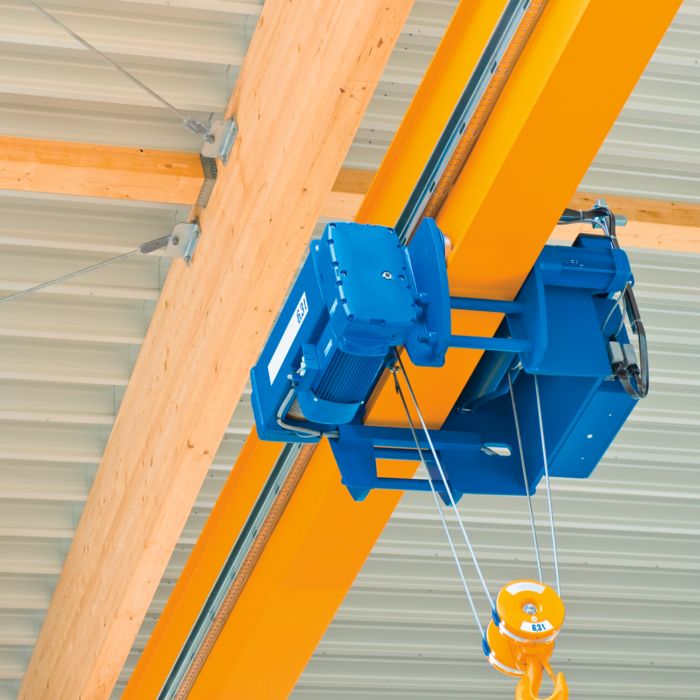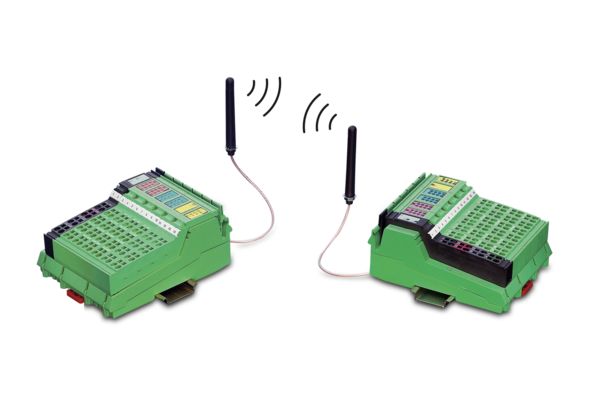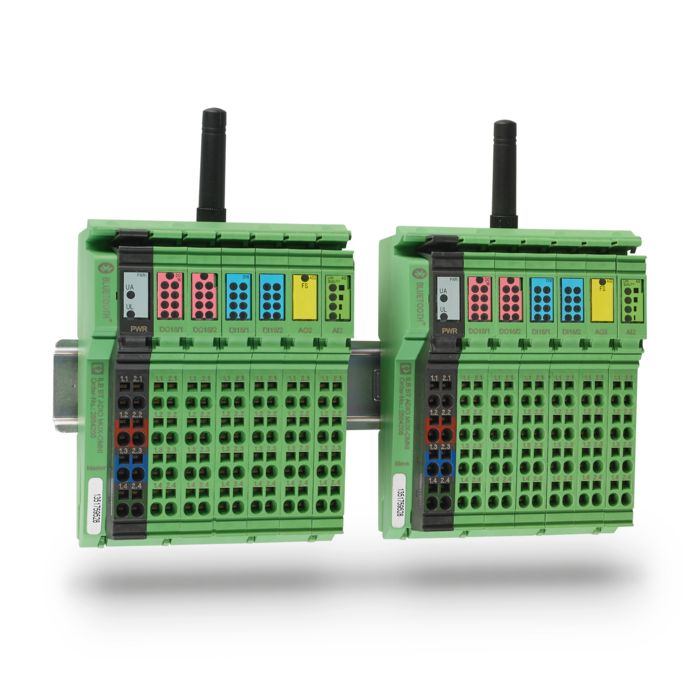
Replacement of slip rings, trailing cables, and cable conduits and drums.
Examples of use:
- Crane systems with wear-free wireless communication between overhead crane and central controller or for the control of so-called “trolleys”, for example
- Concrete plant with wireless communication between bucket cars and central controller or wireless communication between concrete spreaders and central PLC, for example





